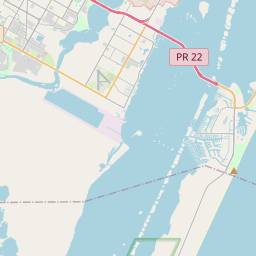Padre Island and Padre Nicolas Balli
Historical marker location:






First called Corpus Christi Island or Isla Santiago, Padre Island was named for Padre Jose Nicolas Balli (177?-1829). His family migrated from Spain in 1569 and became large landowners in the lower Rio Grande Valley, influential in military and governmental affairs. Ordained about 1790, Padre Balli applied to Spain's King Charles IV in 1800 for 111/2 leagues of land on the island. Padre Balli had the land surveyed and in 1804 started the first settlement, Rancho Santa Cruz, about 26 miles from the southern tip. He began the island's first mission for the settlers and to Christianize the Karankawa indians. With help from a nephew, Juan Jose Balli, as "Mayordomo" or Foreman, Padre Balli started ranching, bringing in large herds of cattle, horses, and sheep. Padre Balli served as missionary and the collector of finances for all churches in the Rio Grande Valley. With financial aid from his mother Dona Rosa Maria de Hinojosa, he opened the first mission in present Cameron County and began a church and the first school at present Matamoros, Mexico. Padre Balli's ministry influenced the lives of early settlers in south Texas. He was buried near Matamoros
As one of the most visible programs of the Texas Historical Commission (THC), historical markers commemorate diverse topics in Texas history, including: the history and architecture of houses, commercial and public buildings, religious congregations, and military sites; events that changed the course of local and state history; and individuals who have made lasting contributions to the state, community organizations, and businesses.
The first oil well in the United States was drilled in Texas in 1859. The discovery of oil transformed the economy of the state and helped to make Texas one of the wealthiest states in the nation.
In 1828, the Mexican government granted land to Colonel Henry Lawrence Kinney, an American entrepreneur, who founded the trading post of Kinney's Trading Post near the Nueces River. This marked the beginning of Anglo settlement in the area. Nueces County was officially established in 1846, following the Texas Revolution and subsequent annexation of Texas by the United States.
Throughout the 19th century, Nueces County played a significant role in Texas' development. The town of Corpus Christi, which served as the county seat, became an important regional trade center due to its proximity to the Gulf of Mexico. The county flourished as a shipping hub for livestock, cotton, and other agricultural goods.
The county's history was greatly influenced by its participation in several military conflicts. During the American Civil War, Corpus Christi served as a center for Confederate forces, and the county witnessed both Union and Confederate occupation. Additionally, the county played an important role during World War II, with Corpus Christi becoming a major training center for Navy pilots.
In recent times, Nueces County has continued to grow and evolve. The county's economy has diversified, with tourism, oil and gas, and the military being major contributors. The region boasts numerous attractions, including beautiful coastal beaches, cultural sites, and a vibrant culinary scene. Today, Nueces County remains an important and thriving part of Texas' history and economy.
Nueces County Timeline
This timeline provides a concise overview of the key events in the history of Nueces County, Texas.
- 1836 - Nueces County is established as one of the original counties in the Republic of Texas.
- 1845 - Texas becomes a state of the United States, and Nueces County remains part of the state.
- 1848 - The county seat is established in Corpus Christi.
- 1850 - The population of Nueces County reaches 756 residents.
- 1852 - The Corpus Christi Cathedral is constructed, becoming a significant landmark in the county.
- 1872 - The railroad reaches Nueces County, leading to increased economic development and population growth.
- 1875 - The Nueces County Courthouse, built in the Renaissance Revival style, is completed.
- 1900 - A devastating hurricane strikes the county, causing significant damage and loss of life.
- 1914 - The Port of Corpus Christi is established, becoming a major hub for trade and industry.
- 1931 - The Nueces County Courthouse is expanded and remodeled to its current appearance.
- 1940 - Nueces County experiences a population boom, with the county's residents totaling over 101,000.
- 1987 - Hurricane Gilbert causes widespread destruction in Nueces County and the surrounding areas.
- Present - Nueces County continues to be a thriving center for commerce, industry, and tourism.